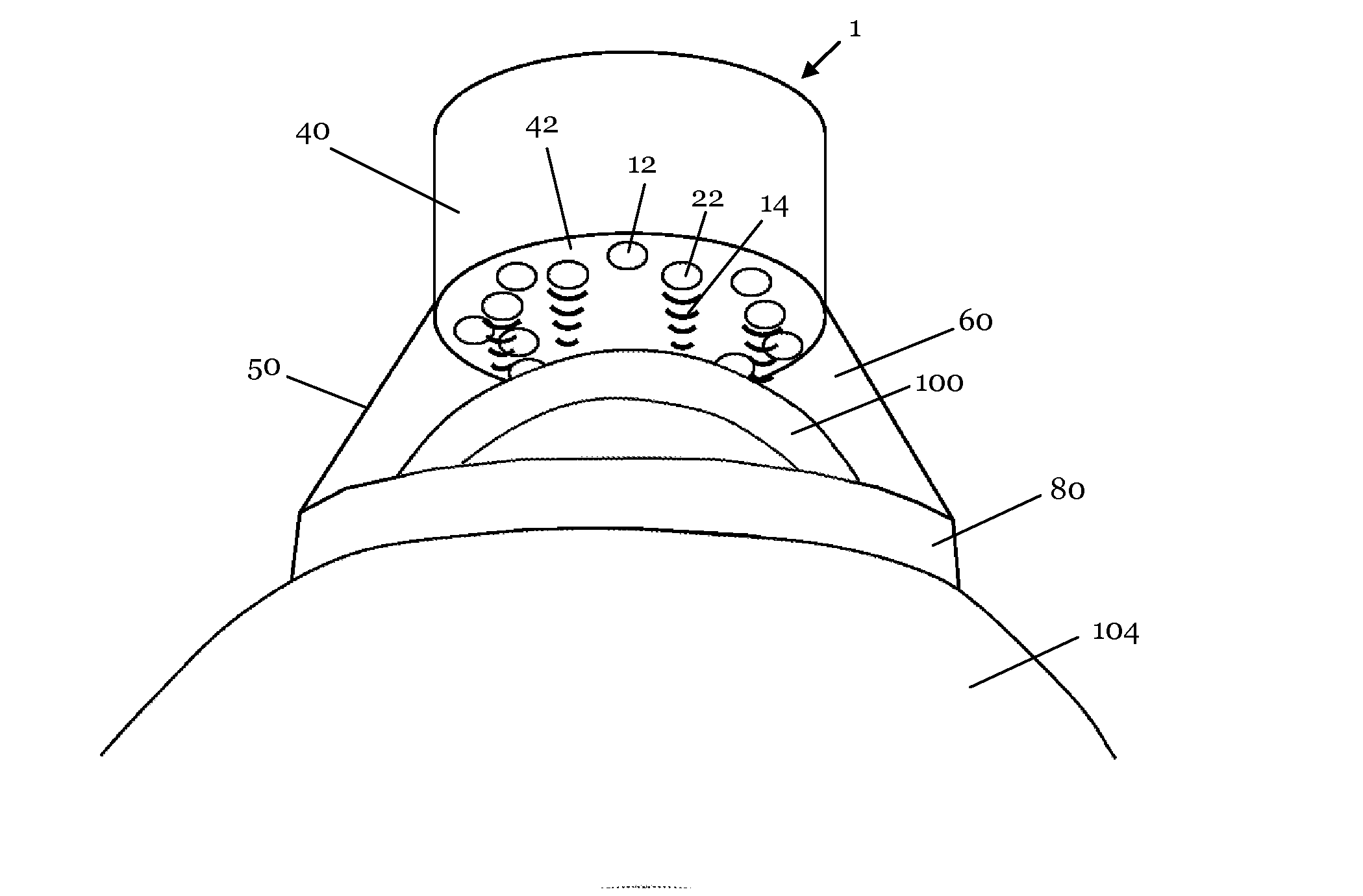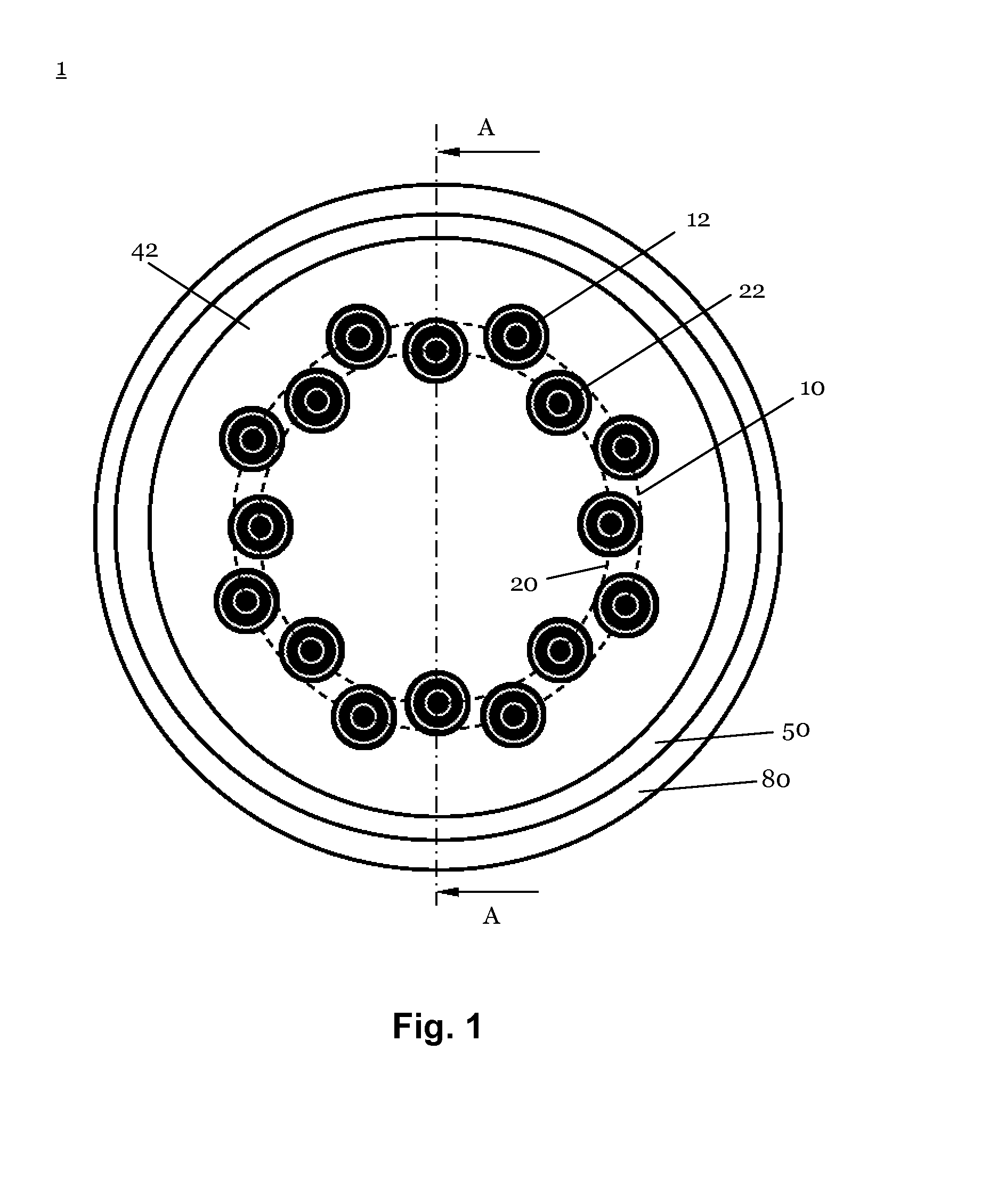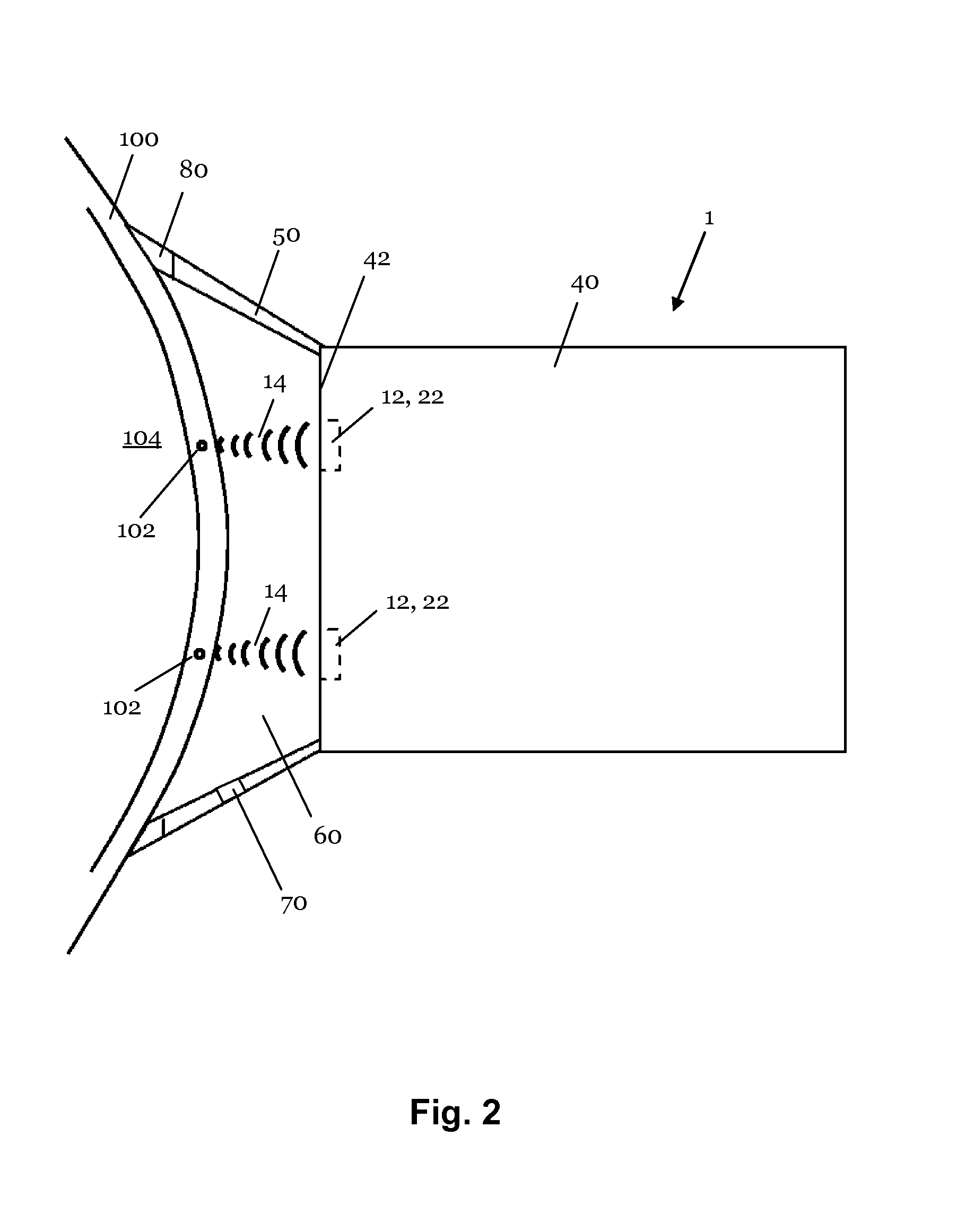Device and method for performing thermal keratoplasty using high intensity focused ultrasounds
a technology of ultrasound and thermal keratoplasty, applied in the field of ocular imaging and thermal keratoplasty, can solve the problems of ocular infections, affecting the integrity of the cornea, weakening of the cornea, etc., and achieves the effects of reducing the need for displacement operations of the thermal keratoplasty device, reducing treatment time and treatment costs, and improving patient comfor
- Summary
- Abstract
- Description
- Claims
- Application Information
AI Technical Summary
Benefits of technology
Problems solved by technology
Method used
Image
Examples
Embodiment Construction
[0048]In the following preferred embodiments of the invention are described with reference to the figures.
[0049]FIG. 1 shows a top frontal view of a preferred embodiment of a device 1 for both ocular imaging and thermal keratoplasty. With the device 1 both ocular Imaging (for example A-scan ultrasonography) by high frequency ultrasound and thermal keratoplasty by High Intensity Focused Ultrasound (HIFU) can be performed with the same device subsequently and directly at the eye of a patient (in vivo).
[0050]As shown in the top-frontal view of FIG. 1 the device 1 comprises two ring arrays 10, 20 of a number of ultrasound transducers 12, 22. The transducers 12, 22 are arranged on the ring arrays 10, 20 in a circular consecutive manner in two concentric ring arrays 10, 20. In the shown exemplary embodiment the diameter of the inner ring array 20 is 6 mm and the diameter of the outer ring array 10 is 7.2 mm. In other embodiments also other diameters or shapes of arrays are possible. The d...
PUM
 Login to View More
Login to View More Abstract
Description
Claims
Application Information
 Login to View More
Login to View More - R&D
- Intellectual Property
- Life Sciences
- Materials
- Tech Scout
- Unparalleled Data Quality
- Higher Quality Content
- 60% Fewer Hallucinations
Browse by: Latest US Patents, China's latest patents, Technical Efficacy Thesaurus, Application Domain, Technology Topic, Popular Technical Reports.
© 2025 PatSnap. All rights reserved.Legal|Privacy policy|Modern Slavery Act Transparency Statement|Sitemap|About US| Contact US: help@patsnap.com



